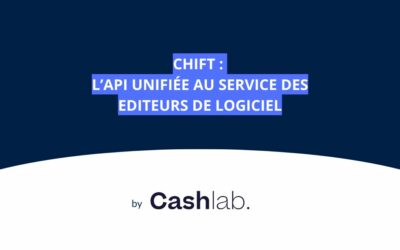In the tense economic context that French SMEs and SMIs are experiencing today, cash management has become a strategic issue. It is a challenge that must enable significant optimisation levers to be identified, to better understand overall profitability and to anticipate possible impasses. To do this, implementing and spreading a cash culture is essential. Becoming itself a strategic tool for decision making.
It's true that, raising awareness of the entire Order to Cash and Procure to Pay process is difficult, but solutions do exist. At Cashlab we believe that in order to implement a cash culture, it is necessary to follow certain steps and involve all the teams in this " company project ". Thanks to the feedback from our Cash and Restructuring experts but also from our network of CFOs, Treasurers and managers, we were able to gather them in this article.
Step 0: Carry out a cash diagnosis
In some cases, it is preferable to start by identifying the items that generate or destroy cash (customers, suppliers, etc.). Either with the help of a cash management tool or a consultancy firm. Or both! During the implementation of a cash management tool, it is often recommended to take advantage of it to evaluate the current organisation of the company. Indeed, the tool without the expertise is currently too often proposed.
What is often noticed in a majority of companies:
- The entrepreneur looks to the future and devotes all his efforts to increasing the level of turnover and profitability of his company.
- The management reports present only the operating profitability indicators.
- Monitoring and analysis of historical cash flows is often non-existent.
- When the treasurer function exists, it is often confined to a role of monitoring the daily position, bank reconciliations, factor flows, etc. All these tasks are useful but do not have a strategic scope.
- The budget exercise is traditionally and logically carried out with a business vision in mind. It includes the achievement of ambitious commercial objectives. Managers rightly tend to give priority to the construction of a provisional analytical income statement. It is often observed that the budgetary exercise stops there, whereas this work should only be a first step.
Step 1: Setting common rules
In order to get off to a good start as a team, it is important to agree on which ratios to focus on for cash monitoring. But also, to identify the different roles of each person on the cash and the associated ratios.
"Finally, the key is to explain to everyone the impact of their actions on the company's cash flow." Nicolas Quintin, General Secretary, VialD Mobivia
Step 2: Involve the different teams
Beyond the finance team, it is strongly advised to integrate the various departments in a Cash reflection in order to achieve the same objective: to improve the company's profitability.
"We need to involve and interest the Purchasing and Sales Departments in the cash topic." Romain Talbot, Financial Markets Manager, Atos.
There are several ways to do this, including:
- The setting up of a common project around Cash
- Helping to raise team awareness through workshops
Often, for the largest companies, the solution is to financially encourage employees to take part in cash issues. This is done through participation and profit-sharing, which in themselves may or may not prove the financial health of the company.
On the other hand, operational and sales staff sometimes have their variable remuneration indexed to business volume targets. These incentive policies, which can be virtuous in certain contexts, can have a strong impact on profitability and cash flow levels. In the end, they are only marginally aware of profitability and cash flow issues (customer risk management, stock monitoring, collection times, etc.).
Step 3: Make teams accountable for receivables
"It is essential to gain the trust of all employees by practising pragmatic pedagogy, and involving them in the implementation and execution of processes. All the while explaining why and how the objectives will be achieved." Thierry Albrand, Director Treasury & Financing, Interim Management.
As Thierry Albrand says, it all starts with a clear explanation of the issues. Such as the issue of outstanding receivables and the protection of receivables.
Step 4: Implement a cash management tool
Setting up a cash management tool is a solution to step 2, which recommends, among other things, carrying out a joint project with all departments.
"The most important thing is to be able to control all operations and to set up a system that allows information to be passed on quickly to the treasury department. This is also where we see the importance of a good cash culture in the company." Olivier Marty, Group Treasury Director Europe, Algeco Scotsman Group.
As proof, most private equity funds have understood the importance of this monitoring. They have already set up this type of tool within their holdings.
A good monitoring of the historical and forecast cash flow allows to:
- Quickly highlight significant optimisation levers (optimised working capital management, investment monitoring),
- Anticipate funding needs,
- Putting in place the relevant and appropriate modes of financing and
- Reassure financial partners in difficult contexts.
Step 5: Build an internal communication on Cash
"The implementation of the cash culture must first be done at management level. It is then up to each individual to pass on this culture to his or her n -1. The main difficulty remains finding the right words to be understood by everyone." Nicolas Quintin, General Secretary, VialD Mobivia
As Nicolas Quintin says, good internal communication is essential. This is why it is advisable to build a cash (and WCR) reporting system as a team, on a common basis. It is often advisable to build a tailor-made format that adapts to the company's problems with the highlighting of relevant indicators.
Cash management and forecasting tools exist to provide access to these ratios/graphs formatted by the organisation using them.
Closely monitor your cash flow in a clear and optimised manner with our Cashlab tool.
Exclusive interview with Jennifer Serfati, Founder of consultancy Hart Group
Jennifer Serfati tells us about the origins, missions and challenges of her consultancy Hart Group. ‘Our motto, ‘The partner for balancing your cash flow’, illustrates our commitment to supporting our customers with a 360° vision’.
CASHLAB x CHIFT
Chift is the fruit of the experience of its three founders in companies specialising in systems integration. After visiting around a hundred companies and analysing the problem, they identified a major gap in the integration market. That's how they came up with Chift, a unified API.
Electronic invoicing reform: what is it all about?
Electronic invoicing is the fully digital management of the invoice lifecycle, from creation to archiving.
![]()
📍1, rue des Prouvaires
75001 Paris
Follow us:
©2023 All rights reserved. | Cashlab | Legal Notice




